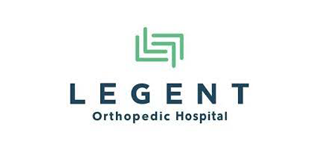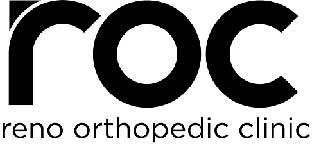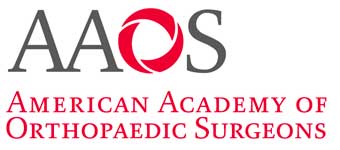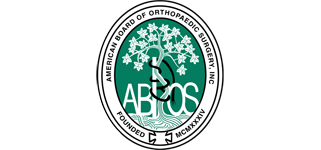Activity After Surgery
Hips
- Avoid extreme hip positions if painful.
- There are usually no other restrictions in movement early after the procedure.
- You may begin using an exercise bike with no resistance as soon as you are comfortable.
- Use crutches or a walker to prevent loss of balance & avoid potential injury.
- Weight-bearing instruction:
- You may place as much weight as you feel comfortable doing on the operated leg unless otherwise instructed.
- Use a walker or crutches if weight bearing is painful.
- When walking without a limp you do not need a walker or crutches anymore
- Use an ice pack on your hip for comfort to reduce pain for the first 24-48 hours post-operatively.
- Drainage from the incision is expected to stop soon after discharge.
- If drainage that persists for more than 3 days (36 hours) please contact our office.
- If the drainage stops or reduces and then increases – please call our office.
- You may resume a normal diet when you feel you have recovered from sedation.
- Consuming foods high in protein, vitamins, and nutrients is critical to recovery and minimizing wound issues
- Once the surgical dressing is removed, you may allow clean water to rinse over the incision, and pat dry with a clean towel. Then apply a dry dressing to the wound site.
- Do not soak or submerge the wound in water until it is fully healed.
- Typically, this is permitted after 6 weeks unless otherwise instructed by Dr. Wright
- Driving may be permitted as soon as 2-4 weeks after surgery, if you are no longer taking the narcotic pain medication and you feel comfortable getting in and out of a car and pressing hard on the brake if needed.
- Do not lift anything more than 10 lbs. or play contact sports until released by Dr. Wright.
- If you develop a fever (above 101.5F), see redness or yellow/brown/green drainage from the surgical incision site, please call Dr. Wright’s office immediately to arrange for an evaluation.
- Take all medication as prescribed, including medicine to prevent blood clots. Should severe calf pain or significant swelling of the calf and ankle occur, please call Dr. Wright’s office.
Knees
- Do not rest with any flexion or bend in your knee.
- Keep the knee straight when sitting or lying down.
- Try to fully straighten the knee and do not put anything behind the knee while resting.
- Place a small rolled towel or pillow just above the heel but not under the knee such that there is space under your knee allowing it to fully straighten.
- Avoid extreme knee positions if painful.
- There are usually no other restrictions in movement early after the procedure.
- You may begin using an exercise bike with no resistance as soon as you are comfortable.
- Use crutches or walker to prevent loss of balance & avoid potential injury.
- Weight-bearing instruction:
- You may place as much weight as you feel comfortable doing on the operated leg.
- Use a walker or crutches if weight bearing is painful.
- When walking without a limp you do not need a walker or crutches anymore
- Use an ice pack on your knee for comfort to reduce pain for the first 24-48 hours post-operatively.
- Drainage from the incision is expected to stop soon after discharge.
- If drainage that persists for more than 3 days (36 hours) please contact our office.
- If the drainage stops or reduces and then increases – please call our office.
- You may resume a normal diet when you feel you have recovered from sedation.
- Consuming foods high in protein, vitamins, and nutrients is critical to recovery and minimizing wound issues
- Once the surgical dressing is removed, you may allow clean water to rinse over the incision, and pat dry with a clean towel. Then apply a dry dressing to the wound site.
- Do not soak or submerge the wound in water until it is fully healed.
- Typically, this is permitted after 6 weeks unless otherwise instructed by Dr. Wright
- Driving may be permitted as soon as 2-4 weeks after surgery, if you are no longer taking the narcotic pain medication and you feel comfortable getting in and out of a car.
- Do not lift anything more than 10 lbs. or play contact sports until released by Dr. Wright.
- If you develop a fever (above 101.5F), see redness or yellow/brown/green drainage from the surgical incision site, please call Dr. Wright’s office immediately to arrange for an evaluation.
- Take all medication as prescribed, including medicine to prevent blood clots. Should severe calf pain or significant swelling of the calf and ankle occur, please call Dr. Wright’s office.
Risks of Surgery
RISKS AND COMPLICATIONS WITH TOTAL HIP AND KNEE REPLACEMENT
Like any major surgery, total hip and knee replacement has some risk of complications. The overall complication risk is low in the hands of experienced surgeons, anesthesiologists, and engaged patients. Potential complications include, but are not limited to the following
Risks related to your diagnosis:
- Continued knee pain and/or stiffness
- Inability to return to previous activity level
- Need for additional surgery
Risks immediately related to the surgery:
- Blood clot (Deep Vein Thrombosis [DVT] or Pulmonary Embolism [PE]): 2%
- This risk is mitigated by use of medical and mechanical prophylaxis
- One of the safest things you can do is walk. The distance is not as important as the frequency of walking after surgery. Try to walk every hour while you are awake
- We will sometimes provide serial compression devices after surgery to take home. These are used routinely in the hospital
- Every patient will be put on medication to prevent this complication
- If you have no history of blood clots, a “baby” aspirin, 81mg twice daily for a month is sufficient to reduce clots with a low risk of adverse effects
- If you do have a history of blood clots, Xarelto 10mg daily for a month is used
- If you are already fully anticoagulated before surgery you will be placed on your home medications immediately after surgery
- Infection: less than 1%
- A severe complication that will require more surgeries, possible implant removal
and prolonged antibiotic treatment
- Preventive measures: Keep incision clean and dry until fully healed. No soaking or submersion of incision for at least 6 weeks. Proper nutrition. Strict blood sugar control. Take antibiotics prior to any dental, GI, dermatologic procedures
- Dislocation: 1%
- The joint comes out of position and requires treatment, perhaps further surgery, to be put back in place
- Infrequent complication of knee replacements, more commonly across the country in hip replacements
- Dislocations are often found to be less common in anterior approach hip surgeries
- Leg Length Inequality: 5%
- Perceived or actual difference in the lengths of the legs which can be worsened by or related to problems with the other hip, knees, spine, or feet.
- Nerve injury: less than 1%
- Numbness, tingling or weakness in the thigh, leg or feet that usually resolves
- Fracture, during or after surgery: less than 1%
- Medical complications: heart attack, stroke, death, kidney failure, allergic reactions
- Clicking, prosthetic or mechanical loosening, failure, or wear:
- Inherent risk with any manmade, mechanical device
- Scarring, blood loss, vascular injury, swelling, adhesions, bursitis, tendonitis, muscle soreness, sensory changes over incision
If you have a history of any of the following, please inform your surgeon prior to surgery:
- History of blood clot (DVT or PE), history of MRSA or joint infection, diabetes, previous H.O. occurrence, complications with anesthesia
Please refer to the below website for further information:
https://orthoinfo.aaos.org/en/treatment/preparing-for-joint-replacement-surgery/












Recent Comments